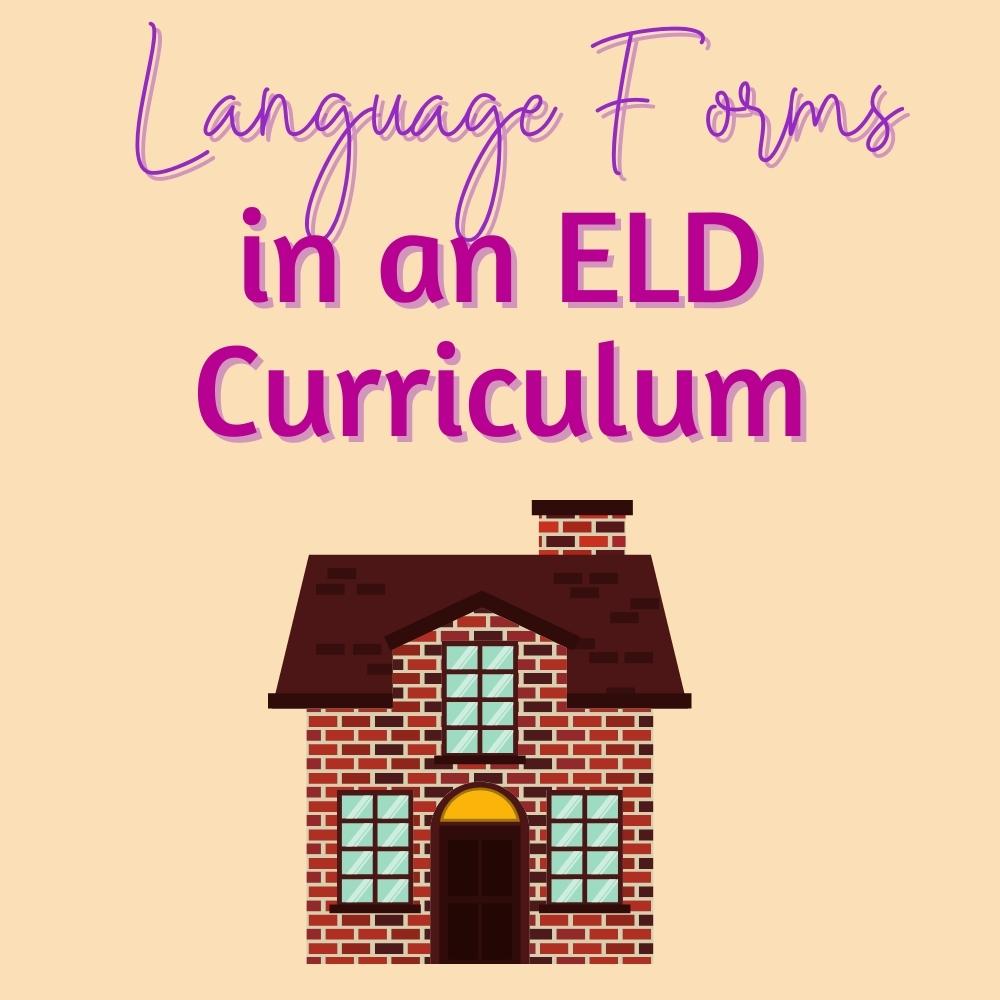I previously wrote about high-yield language functions, but if language functions are the verbs used to learn language, what are language forms and how do we use language forms in an ELD curriculum? Typically when we talk about language forms, we are referring to three levels of language, the discourse level, sentence, and word levels. I like the metaphor of building a house.
Language Form:
Word Level AKA Vocabulary “The Bricks”

The individual bricks of the house are the words. They are very useful and the house could n0t be built without them, each brick has meaning, but in order to take a shape, they need mortar to put them together. So is the case with language forms. The individual vocabulary words are the building blocks of language. Of course, these could be broken down further into what makes a brick- phoneme, morphemes, affixes, etc. In creating your own ELD curriculum, look at the standards and the language functions, but then think about what words do students need to know. Focus on the academic vocabulary. Get to know the Tier 1, Tier 2, and Tier 3 vocabulary for each unit. Future blog posts will give some ideas about this.
Language Form:
Sentence Level AKA Grammar “The Mortar”

Mortar is what keeps bricks together and gives them a greater structure. In language forms, this is grammar. Twenty years ago, ESL teachers predominantly taught grammar (and vocabulary), without the discourse factoring in. Things have changed, where I think we teach more of the discourse level now, embedding the grammar and vocabulary. Grammar has its place. For example, if I am teaching the language of cause and effect, I have to teach independent and dependent clauses [Because this event happened, this other things was the result] and conditionals [If…then]. Without grammar and syntax, there is nothing to stick the vocabulary together, so it places an essential role, but not in isolation. In future blog posts when I write about each of the high-yield language functions, I will make note of grammar used in these.
Language Form:
Discourse Level AKA Context “The House”

Houses are built from nothing. They take bricks, mortar, and also planning. So, it is with discourse. Discourse means context. Context could include audience [formal/informal], purpose [writing/speaking], and genre [fiction/informational/persuasive], but it also is the why and how we use language. In ELD curriculum writing, this is simply the sentence frames needed for students to engage with the language within the proper context. Sentence frames are a support, but they are deeper than that. They provide the context, the framework, the discourse, for what a student is trying to understand within the content. To me, sentence frames are the most important tool in an ELD teacher’s toolbox and need to be used extensively.
Language Forms in an ELD Curriculum
As I mentioned above, I will be writing future blog posts whereby I give suggestions on the use of high-yield language functions. In each of those, I will offering ideas on language forms for the vocabulary, grammar, and context of each function across the content areas.
If you like how my brain works, check out my store and see if there is anything you like!

Leave a Reply